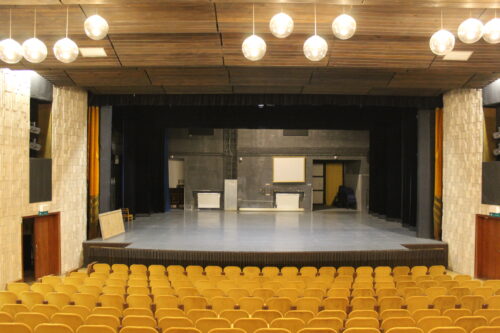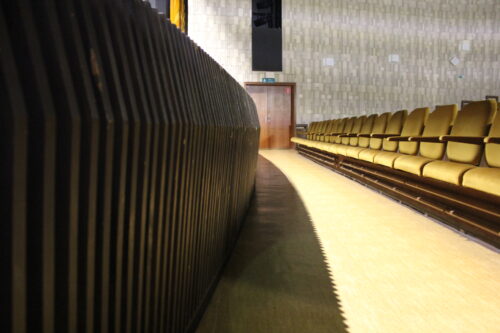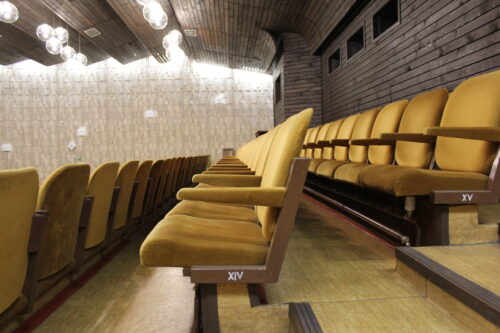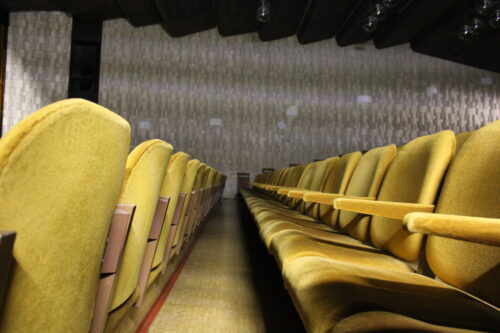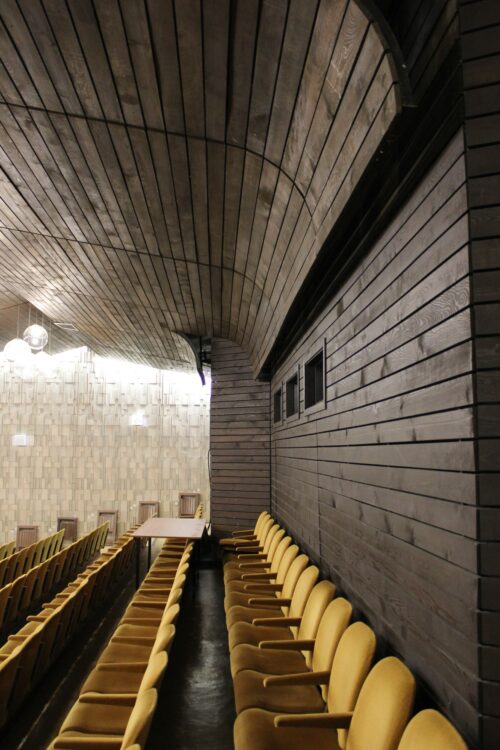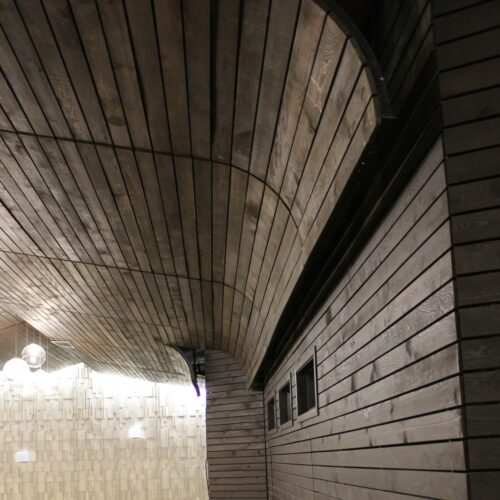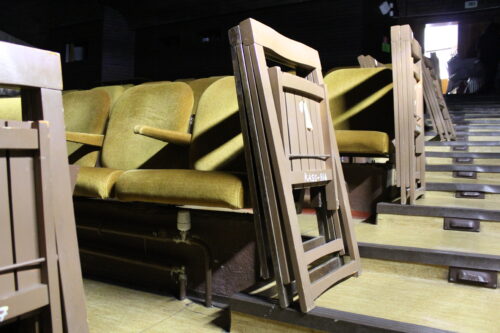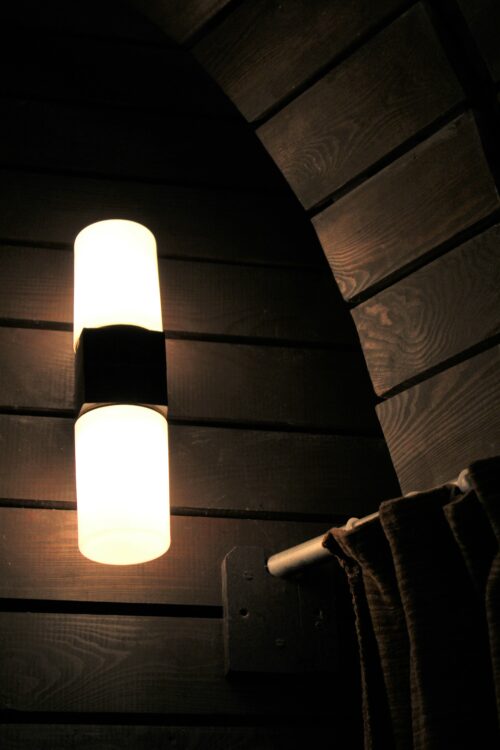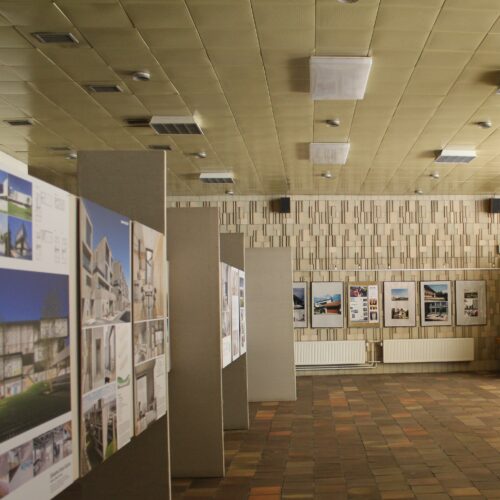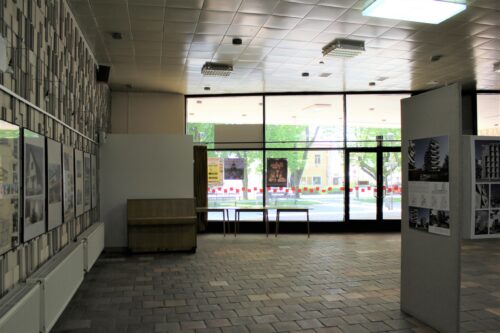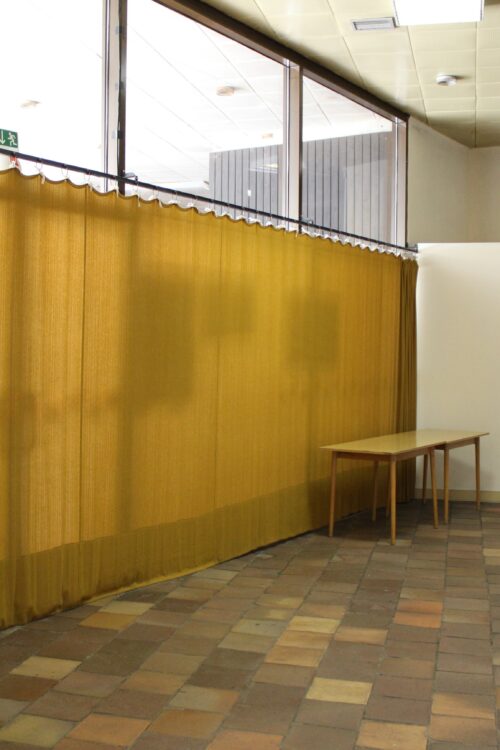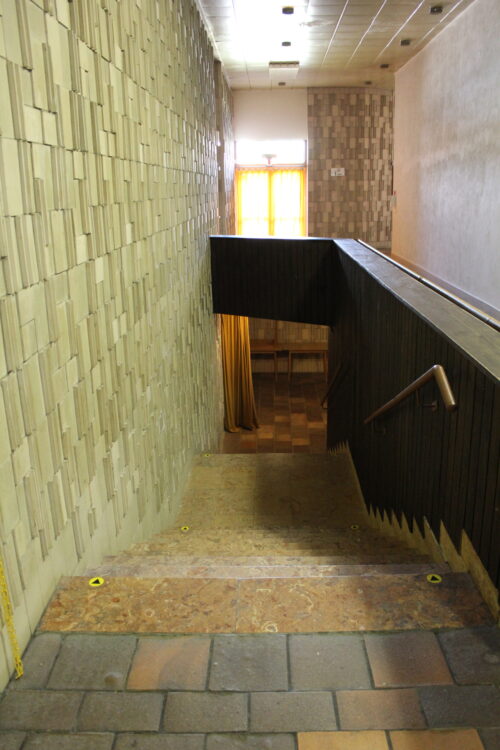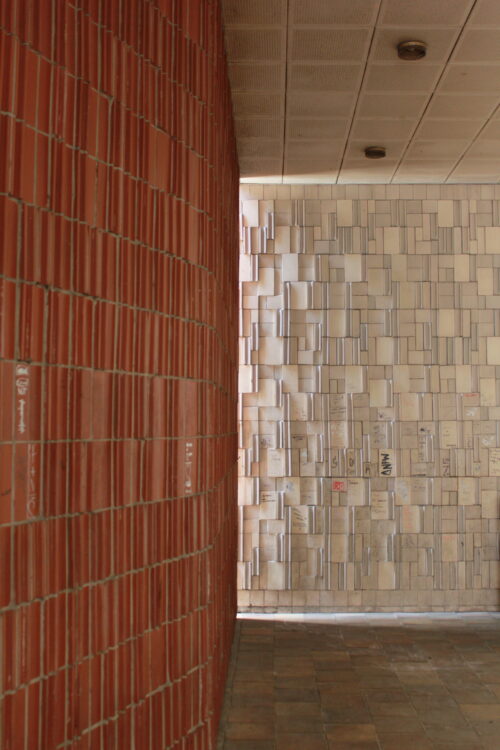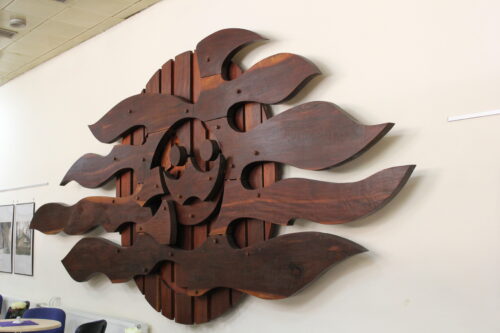Cultural Centre
Category: Cultural institutions
Architect: Milica Marcinková
In cooperation with: Milica Marcinková, Nora Sopková
Curtain and tapestries: Slávka Procházková-Pecháčová
Works of art: Andrej Goliaš
Landscaping design work: Dana Marcinková
Location: Hurbanovo námestie 19, Bojnice
Design: 1972–1975
Built in years: 1975–1981

The interiors of the Cultural Centre are characterised by a clearly defined space composition reflected in the approach to the whole up to the design of individual operating areas. The rational layout scheme, preferred principle of simplicity accentuating universality, balanced visual connection of the interior and the exterior and other concomitant features contributed to the creation of a work that, owing to its versatile qualities, has lasted to date. The joint characteristic features of the exterior pre-field and the entrance foyers are a generous scale and their mutual interconnection, creating optimum conditions for the entry and gathering of the visitors. The space of the foyer, operation-wise divided into several parts, fulfils the function of a space for communicating, circulation and that of a lobby space. Its integral parts are the area of the bar and the relaxation seating zones. The middle part continuously leads to the cloak room zone and the sanitary facilities for visitors. “The foyer has been used as an exhibition space to date. For this purpose, curtains have originally been designed, shading the facade glazing, thereby creating better light conditions for displaying artistic works.” [7]
The cultural and social activities take place in two hall spaces and club rooms separated by the layout. The multi-purpose cinema and theatre hall with a classical tiered auditorium offers seating for 365 visitors. Its design specifics are wooden foldable seats located at the end of the rows of seats, allowing additional visitor capacity. As a result of gradual innovations, the hall is currently equipped with a modern technology park enabling the delivery of a wide spectrum of events. The congress hall with a flat floor has been designed as a social event hall with versatile use from the very beginning. Its capacity is ca. 200 places, depending on the used types and current arrangement of the seating furniture. A progressive interior concept for its period with sliding partition systems offered a variety of possibilities to interconnect the hall space with the club rooms and thus the flexibility of the functional utilisation. Currently, the interior of the congress hall is predominantly used for the activities of artistic ensembles and as a venue for diverse events, such as ceremonies, estrade and dancing events.
The cultivated architectural composition of the masses is continuously visually “coloured” with rasters of different types and colours of surface materials. Together, these create abstract visual art sceneries, promoting visual dynamics and acoustic qualities of the interior. The unifying material is the structural ceramic facing with unique expression by Marián Marcinko, smoothly transitioning from the exterior facade to the interiors of the entrance foyer, halls and other public spaces. Here, it enters into correlation with the dark-brown wooden slats, dark-yellow upholstery of the seats and the fabric curtain in the cinema and theatre hall; the stoneware floor tiling and fabric curtains in the entrance hall etc. As in other cultural stands of this period, works of art also play an important role here in adding a final touch to the interior, the most valuable being the wooden relief by Andrej Goliáš, standing out from the pale background of the wall in the entrance foyer.
Despite the building being preserved almost in its original condition, several modifications have been made during the necessary refurbishing, as Lukáš Procházka commented: “The functioning of the building without the change of its purpose for many years is a signal of the design quality and the timelessness. However, some interventions in the building, such as placing of posters on the window panes of the entrance facade deteriorate the functionality, transparency, and aesthetics of the entire front facade, thereby impairing the quality of the original architectural solution.” [7] However, the original architecture, identity and uniqueness of the work have been preserved to this day.
- Šlachta Štefan v rozhovore s Marcinkovou Milicou: Ako žena – architektka v profesii som nemala problémy na škole ani na pracovisku. [Šlachta Štefan in an interview with Marcinková Milica: As a woman – designer by profession, I did not have any problems at school or at the workplace.] Website of Archinfo. Available at: https://www.archinfo.sk/ludia/architekt-alebo-student-architektury/ing-arch-milica-marcinkova.html
- Brtko, Peter: Kultivované dielo s problematickou lokalizáciou. [A Cultivated Work with Difficult Localisation.] In: Projekt 2/264, 1983
- Dom kultúry v Bojniciach na hlavnom námestí. [The Cultural Centre Bojnice at the Main Square.] Website of Archinfo. Available at: https://www.archiweb.cz/b/dom-kultury-v-bojniciach-na-hlavnom-namesti
- Dom kultúry Bojnice.[The Cultural Centre Bojnice.] Website: Register of Modern Architecture – Department of Architecture, Institute of History of the Slovak Academy of Sciences. Available at: https://www.register-architektury.sk/sk/objekt/356-dom-kultury-bojnice
- Kultúrne centrum Bojnice – Priestory – Fotogaléria. [The Culture Centre Bojnice – Spaces – Photogallery.] Website of KCB. Available at: https://kcbojnice.sk/?page_id=23
- rtv: Ikony (Marián Marcinka a Milica Marcinková). [Icons (Marián Marcinka and Milica Marcinková).] Available at: https://www.rtvs.sk/televizia/archiv/16250/259819#1128
- Procházka, Lukáš: Kultúrny dom Bojnice. [The Cultural Centre Bojnice.] Seminar paper for Public Interior course, Faculty of Architecture and Design STU Bratislava, Summer Term 2021–22
Lukáš Procházka
